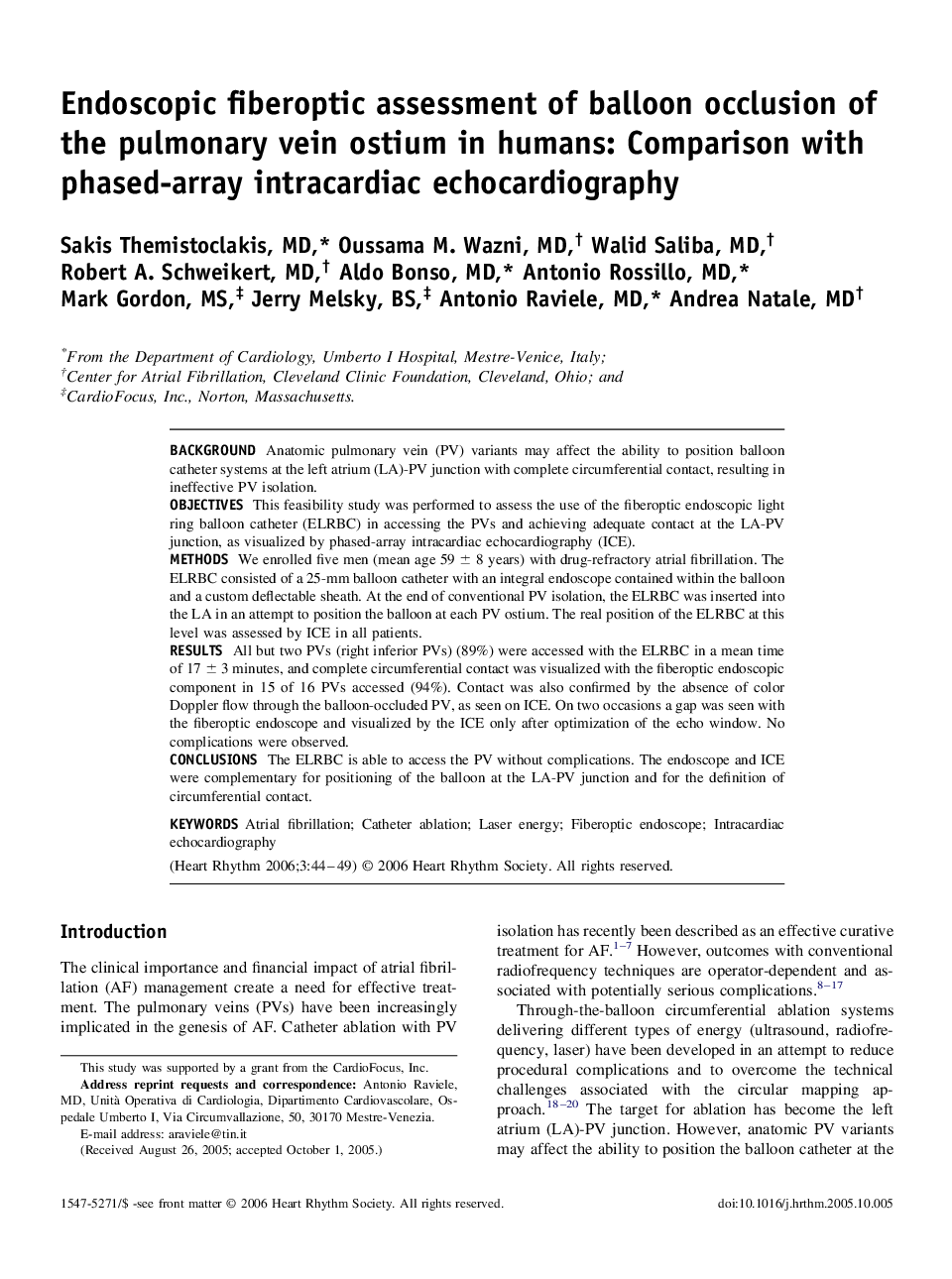| Article ID | Journal | Published Year | Pages | File Type |
|---|---|---|---|---|
| 2924747 | Heart Rhythm | 2006 | 6 Pages |
BackgroundAnatomic pulmonary vein (PV) variants may affect the ability to position balloon catheter systems at the left atrium (LA)-PV junction with complete circumferential contact, resulting in ineffective PV isolation.ObjectivesThis feasibility study was performed to assess the use of the fiberoptic endoscopic light ring balloon catheter (ELRBC) in accessing the PVs and achieving adequate contact at the LA-PV junction, as visualized by phased-array intracardiac echocardiography (ICE).MethodsWe enrolled five men (mean age 59 ± 8 years) with drug-refractory atrial fibrillation. The ELRBC consisted of a 25-mm balloon catheter with an integral endoscope contained within the balloon and a custom deflectable sheath. At the end of conventional PV isolation, the ELRBC was inserted into the LA in an attempt to position the balloon at each PV ostium. The real position of the ELRBC at this level was assessed by ICE in all patients.ResultsAll but two PVs (right inferior PVs) (89%) were accessed with the ELRBC in a mean time of 17 ± 3 minutes, and complete circumferential contact was visualized with the fiberoptic endoscopic component in 15 of 16 PVs accessed (94%). Contact was also confirmed by the absence of color Doppler flow through the balloon-occluded PV, as seen on ICE. On two occasions a gap was seen with the fiberoptic endoscope and visualized by the ICE only after optimization of the echo window. No complications were observed.ConclusionsThe ELRBC is able to access the PV without complications. The endoscope and ICE were complementary for positioning of the balloon at the LA-PV junction and for the definition of circumferential contact.
